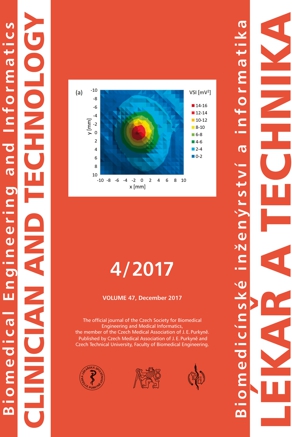SENSITIVITY OF AUDITORY PERCEPTION TO CHANGES IN PHASE SPECTRUM
Abstract
This paper deals with sensitivity of human auditory to changes in sound phase spectrum. Although the human auditory system was considered “phase deaf” for a long time, nowadays a few recent studies proved that the change of sound phase spectrum has a significant impact on auditory perception. The aim of this paper is to verify these mentioned claims. To achieve this aim it is fundamental to perform listening tests with phase changed audio signals. The phase changes were applied to two groups of audio signals – synthetic signals and real signals. Thus, the listening test consisted of six different experiments and fourteen subjects participated in the listening test. The results of the test were statistically analyzed by ANOVA and the effect of phase changes to human auditory perception was determined based on these results.
Downloads
Published
Issue
Section
License
Copyright (c) 2018 Ivana Štěpánková

This work is licensed under a Creative Commons Attribution 4.0 International License.
Authors who publish with this journal agree to the following terms:
- Authors retain copyright and grant the journal right of the first publication with the work simultaneously licensed under a Creative Commons Attribution License (https://creativecommons.org/licenses/by/4.0/) that allows others to share the work with an acknowledgment of the work's authorship and initial publication in CTJ.
- Authors are able to enter into separate, additional contractual arrangements for the non-exclusive distribution of the journal’s published version of the work (e.g., post it to an institutional repository or publish it in a book), with an acknowledgment of its initial publication in this journal.
- Authors are permitted and encouraged to post their work online (e.g., in institutional repositories or on their website or ResearchGate) prior to and during the submission process, as it can lead to productive exchanges.
CTJ requires that all of the content of the manuscript has been created by its respective authors or that permission to use a copyrighted material has been obtained by the authors before submitting the manuscript to CTJ. CTJ requires that authors have not used any copyrighted material illegally, as for example a picture from another journal or book, a photo, etc. It is the author’s responsibility to use only materials not violating the copyright law. When in doubt, CTJ may ask the authors to supply the pertinent permission or agreement about the use of a copyrighted material.
The opinions expressed in CTJ articles are those of authors and do not necessarily reflect the views of the publishers or the Czech Society for Biomedical Engineering and Medical Informatics.


